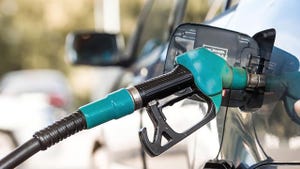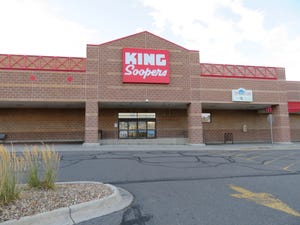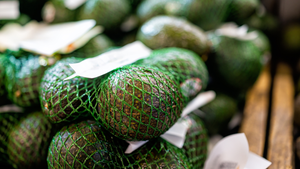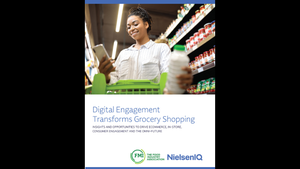Costco Wholesale turns in first-quarter gainsCostco Wholesale turns in first-quarter gains
Warehouse club chain’s earnings exceed Wall Street’s expectations
December 13, 2019

Costco Wholesale Corp. beat Wall Street’s earnings forecast for its fiscal 2020 first quarter, despite reporting last week that sales growth would be impacted by this year’s later Thanksgiving holiday period.
For the 12-week quarter ended Nov. 24, net sales rose 5.6% to $36.24 billion from $34.31 billion a year earlier. Comparable-store sales advanced 4.3% year over year (5% excluding changes in fuel pricing and foreign exchange) companywide.
In the United States, comp sales were up 4.7% (5% excluding fuel and forex), while gains were 2.9% in Canada (5.1% excluding fuel and forex) and 3.2% internationally (4.5% excluding fuel and forex). Companywide e-commerce sales increased 5.5% (5.7% adjusted) on a comparable basis.
Issaquah, Wash.-based Costco noted that total and comp sales in the quarter reflect a 0.5% negative impact from Thanksgiving occurring a week later in 2019. For e-commerce sales, the impact was 12 percentage points.
“In terms of Q1 comp-sales metrics, first-quarter traffic or shopping frequency increased 3.4% worldwide and 3.1% in the U.S. This again includes the impact of the Thanksgiving holiday shift,” Chief Financial Officer Richard Galanti told analysts late yesterday in a conference call. “Weakening foreign currencies relative to the U.S. dollar negatively impacted sales by approximately 30 basis points, and gasoline price deflation negatively impacted sales by approximately 40 basis points. Our average transaction, or ticket, was up nine-tenths of a percent during the quarter, including the negative impacts of gas deflation, FX and the holiday shift.”
Reported membership fee income was $804 million for the quarter, up 6.1% versus a year ago. Excluding foreign exchange, that total would have been $1 million higher, according to Galanti. “Our U.S. and Canada renewal rates came in at 90.9%, and the worldwide rate was 88.4%,” he said. “Both of these figures remained at the same renewal rate levels that were achieved 12 weeks ago at the fiscal year-end.”
On the earnings side, fiscal 2020 first-quarter net income totaled $844 million, or $1.90 per diluted share, compared with $767 million, or $1.73 per diluted share, a year ago. Costco said the result includes a $77 million (17 cents per diluted share) tax benefit from stock-based compensation, up from a $59 million (13 cents per diluted share) benefit in the prior-year period.
Analysts, on average, had projected adjusted earnings per share of $1.71, with estimates ranging from a low of $1.62 to a high of $1.87, according to Refinitiv/Thomson Reuters.
Costco’s first-quarter revenue of $37.04 billion came in just short of analysts’ consensus forecast of $37.25 billion. Estimates ran from $36.24 billion to $37.68 billion.
“Total online grocery continues to grow at a faster rate than the core e-commerce comps — although, again, it's still a relatively small piece of the business,” Galanti said in the call. “We also during the quarter launched as a test in a few locations same-day prescription delivery with Instacart,” he added. “And we launched in the quarter same-day alcohol delivery also through Instacart in California, such that, as of today, it's being offered in 12 states.”
Responding to a question from Jefferies analyst Christopher Mandeville, Galanti said the prescription delivery pilot reflects a move to provide more convenience to customers.
“With the Instacart relationship, we have them already coming into our locations, [so] let's give this a shot. We already have a good and growing mail-order [pharmacy] business. We have 540-ish pharmacies around the country, but this is another opportunity,” he said. “You've already got these [Instacart] drivers delivering groceries to others; hopefully, we can do this. And it is something to add to the competitive belt.”
Costco closed out the first quarter with 785 warehouse clubs, including 546 in the U.S. and Puerto Rico, 100 in Canada, 39 in Mexico, 29 in the United Kingdom, 26 in Japan, 16 in Korea, 13 in Taiwan, 11 in Australia, two in Spain, and one apiece in Iceland, France and China. The company operates e-commerce sites in the U.S., Canada, the United Kingdom, Mexico, Korea and Taiwan.
“In terms of warehouse expansion, we expect to open net new units of somewhere around 20, plus or minus, with a lot of it planned new openings, much of it backloaded toward the end of the fiscal year,” said Galanti. “As of Q1 end, we had total warehouse square footage of 114 million square feet.”
In a research note late Thursday, Jefferies’ Mandeville said Costco’s first-quarter results were “OK” — in the context of its typically high-level performance — and noted that the retailer continues to build out its e-commerce offering.
“Management signaled that while it's still testing the waters in terms of adopting a fuller-scale e-commerce platform, they are nonetheless continuing to invest behind enhanced IT capabilities within fulfillment, including automation at Costco business centers/depots as well as modernization efforts across the value chain. Given this, we'd expect to see some lingering SG&A pressure for the foreseeable future,” Mandeville wrote. “While the Rx test and alcohol [delivery] offering are still in their infancy, these are examples of Costco’s willingness to leverage its Instacart partnership to provide members value-added services and convenience in a relatively cost-effective manner.”
About the Author
You May Also Like






